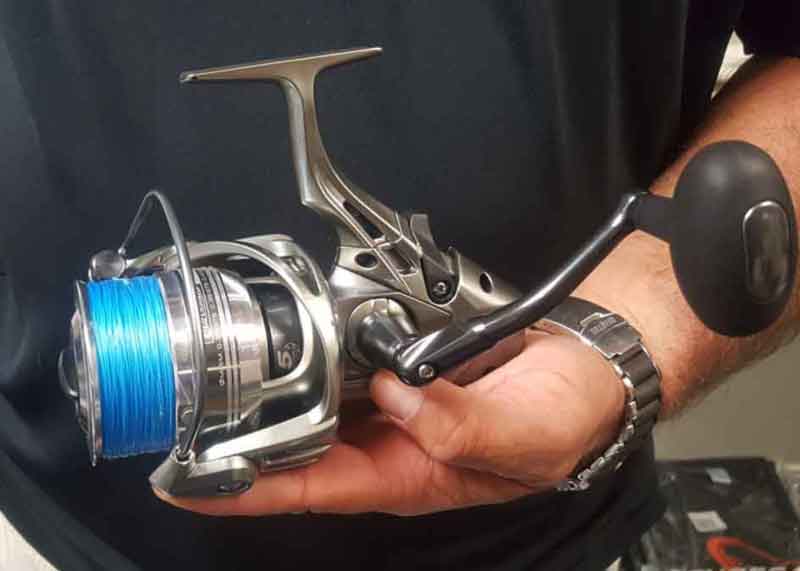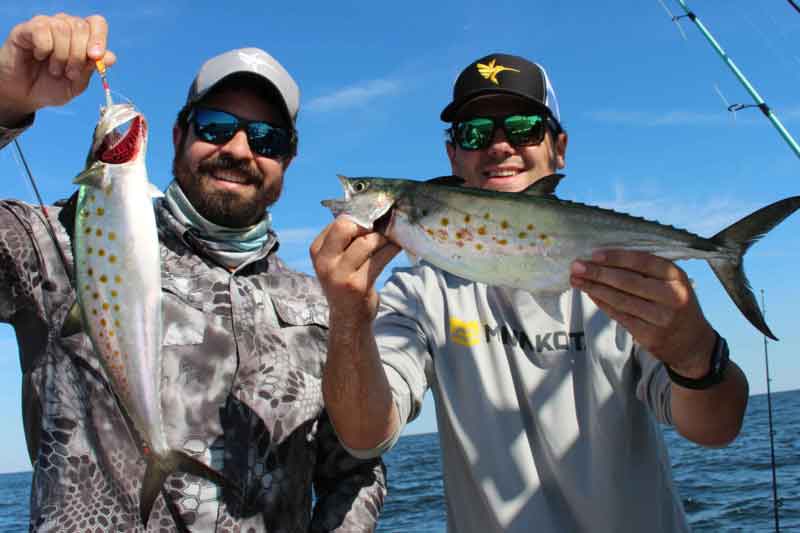Between the winter freshwater bite, shots at tautog, and a hard-water fishing trip or two, we Mid-Atlantic anglers have plenty of options for keeping ourselves busy even during the month of February. Still, this month there will also be days at a time when fishing isn’t a tenable option. Issues like blizzard-closed roads, frozen car batteries, and the dreaded tragedy of skim-ice do occur. Many of us will focus on gear maintenance and acquisition during these periods, as we look forward to a spring filled with bent rods and full coolers – or at least conditions that allow the water to freeze thick enough to safely walk out on it and start punching holes. As you gear up for spring, keep these 10 tips in mind.

- Cut the last 20 feet of line off all your reels. The end of your line is the section most likely to rub against oyster shells, fallen timber, submerged rocks, or the hull of your boat. As a result, it sees more chaff and line-wear than the rest of what’s on your reel. Pull out 10 feet of line right now, and slide you hand along it. You’ll likely discover multiple nicks and abrasion. Pull out another 10 just to be safe, cut it all off, and start the spring with your line in good shape. Bonus Tip: Don’t forget to stow those reels with the drags loosened up. Leave a drag tightened down all winter long and the washers can get pinched, ruining their smooth operation.
- Replace all monofilament over two years old. Even if you haven’t used a rig much during the past couple of years, monofilament weakens with age. UV rays cause deterioration (you do make sure to stow all mono and reels spooled with mono out of direct sunlight, don’t you?) so that 15-pound test you spooled up with a few seasons is really more like 12-pound test, today.
- Run a pair of pantyhose through the guides of all your fishing rods. Have you ever had a rod that seemed to suffer from break-offs more often than the others in your arsenal? A bur or chip in a guide’s liner is the likely reason why. (Stop putting hooks through the center of your rod guides, and start putting them through the guide’s feet or a hook holder, instead). It can take a lot of lost fish to ID a rod with a tiny defect in the guide liner, but if you run a pair of pantyhose through the line guides, rough edges will snag and rip it and alert you to their presence. Then you’ll know to replace the offending guide or retire the rod entirely.
- Test and lube the line rollers on all your reel bails and roller guides. After a long season of fishing those little rollers rarely continue functioning properly. To give them a test, cut a rubber band in half, slide the end over and/or through the roller, and saw it back and forth. If it doesn’t spin without resistance, the roller needs to be disassembled, cleaned, lubed, and reassembled.
- Throw away and replace all those rusty old hooks. Sure, you could sharpen them. But truth be told, with today’s uber-sharp laser- and chemically-honed hooks you’ll never be able to make them as sharp as they were when you ripped open the package. So bite the bullet, toss ‘em out, and start fresh. Bonus Tip: You say you’re a total skinflint, and you’re going to break out the grinding stone and recycle those old hooks anyway? When you get done with the sharpening, you tightwad, paint over the point with a Sharpie pen. The ink helps seal out moisture, and prevent corrosion down the line.
- Grab some metal polish, and clean up your spoons. Remember how much time you spent last season trolling small gold and silver spoons through the brine for Spanish mackerel? (And if you didn’t, what’s wrong with you!? That was the best mackerel run in modern Chesapeake history.) Now, open up your box and give those spoons a look. Chances are they’re pretty dingy right about now. This is the time to shine them up, so you’re ready when those mackerel return to our waters.
- Take a full inventory of your gear, and make a to-get list. It’s all too easy to go out in the spring and realize you ran out of white tails or lost the last one-ounce jighead on the final trip last season. Prevent such calamity, by figuring out what you need and stocking up right now.
- Check all your battery-powered accessories, and remove the batteries. You really should have done this when the season wound down, but ask yourself: are there double-Ds in that portable minnow bucket aerator right now? Does a set of AAs currently reside in your headlamp? Leave those batteries in place until spring, and there’s a fair chance they’ll leak and damage your equipment.
- Replace the old copper on all your ballyhoo rigs. How many times did you try to pull it straight and re-use it? Every time you wind the wire around a bill and hook it gets bent and kinked, and becomes harder and harder to rig with. After a couple-few uses, it’s practically impossible to use. Keep recycling that copper, and you’ll soon find it take you twice as long to rig up a ‘hoo.
- We saved number 10 for you fly fishing aficionados: strip all the fly line off your reels, and clean it. Fly line can get algae, grime, and mineral build-up on its porous surface, which reduces casting distance and increases weight. Drop the coils of line into a bucket of warm, soapy water, let it sit for a few minutes, then run it through a cloth before reeling it back on. This is also an opportune time to dress the line, if you so desire.

Wait a sec, the weatherman says tomorrow’s high is going to climb to a balmy 20-degrees? Wind will be down to a mere 20-knots? Forget about all these tackle maintenance chores and run for the tackle shop, quick! That gorgeous weather-window means it’s time for a mid-winter fishing trip.